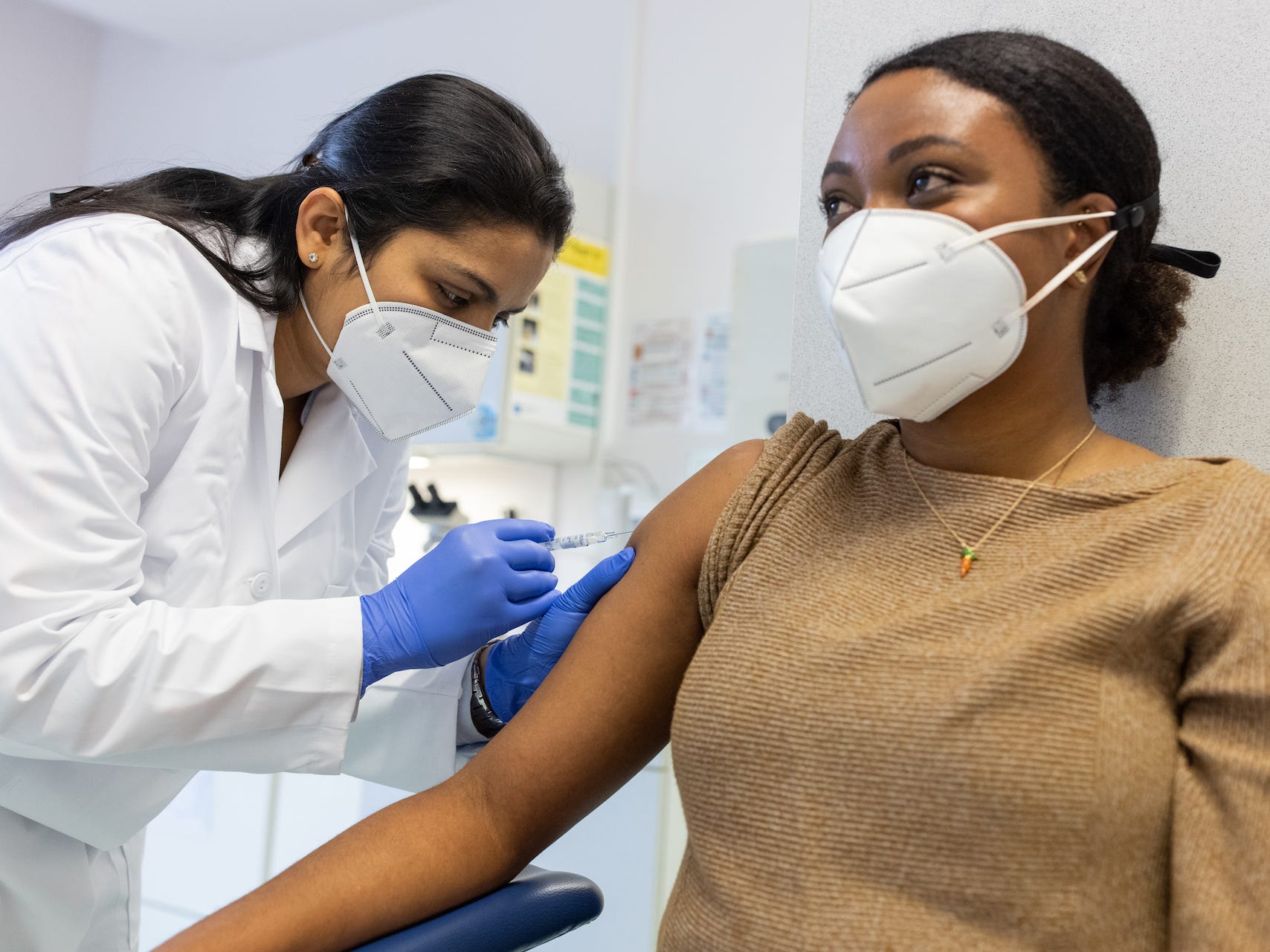
- A new report from Gusto finds small business employment growth is higher in some states.
- In the services sector, it's higher in the states with high vaccination rates, specifically.
- Vermont had both the highest growth and full vaccination rate at the time of the analysis.
- See more stories on Insider's business page.
The states that are seeing robust employment growth for small businesses are also ones where many residents are vaccinated, according to a new report from Gusto.
The report from Gusto, a small business payroll and benefits platform, shows that small businesses in the service sector tended to have larger employment growth in the states with higher vaccination rates. States with a large number of new coronavirus cases also weren't seeing strong growth compared to others.
"Public health and economic recovery are not at odds; they are deeply linked," Luke Pardue, an economist at Gusto wrote. "Gusto data shows public health is the surest way for the economy to recover."
Small businesses overall are having a hard time finding workers. According to the latest National Federation of Independent Business report, 46% of small business owners in June had openings they couldn't fill. "In the busy summer season, many firms haven't been able to hire enough workers to efficiently run their businesses, which has restricted sales and output," Bill Dunkelberg, chief economist at NFIB said in a release.
But the link between high vaccination and faster recovery was highlighted by Gusto in two charts, one using new coronavirus cases from the weeks of June 7 and July 19 and the other using average vaccination rates from the week of June 7. Although growth varies throughout the nation, most small businesses in the service sector have seen some growth.
This chart, replicated from Gusto's data, shows there may be a relationship between states where people are getting vaccinated and those seeing employment growth.
Those with low vaccination rates seem to also have lower growth. Mississippi in particular had a low vaccination rate relative to others, with an average of 27.9%, using data from the week of June 7. The state also had actually seen a 2.3% decline in headcount. Four of the 47 states actually saw employment declines, such as Nebraska, which saw a decline of 5% from the week of June 7 to the week of July 19.
On the other hand, Vermont stands out in the chart with a high average vaccination rate of 59.9%. The state similarly had the largest employment increase among the 47 states between the week of June 7 and the week of July 19, at 17.1%.
The following chart replicated from Gusto shows the negative correlation between new coronavirus cases and employment changes.
Tennessee stands out in the above chart with a high number of new cases from the week of June 7 to the week of July 19, and employment growth of only 0.3% during this time. Gusto wrote that "a 10 percentage point increase in new cases is correlated with a 0.1 percentage point slower rate of headcount growth."
The scatter plots show a correlation between the two, not a causal relationship, it's worth noting.
The NFIB report found a record 39% of small businesses overall have increased compensation for workers. Employers across the US, especially in leisure and hospitality, have boosted pay to help get workers to fill open positions. According to Insider's Emily Canal, small businesses are offering more voluntary benefits, such as pet insurance, as one way to get new employees.
Not all small businesses require vaccinations; that varies by state. For instance, the Society for Human Resource Management's analysis of Census small business pulse survey data find Georgia and Ohio were two states least likely to require this.
And although some workers looking for work may be hesitant about returning to work because of the Delta variant, new survey data from Indeed shows less unemployed workers surveyed in July cited concerns of COVID-19 as the reason they're not urgently looking for work than those surveyed in June.

